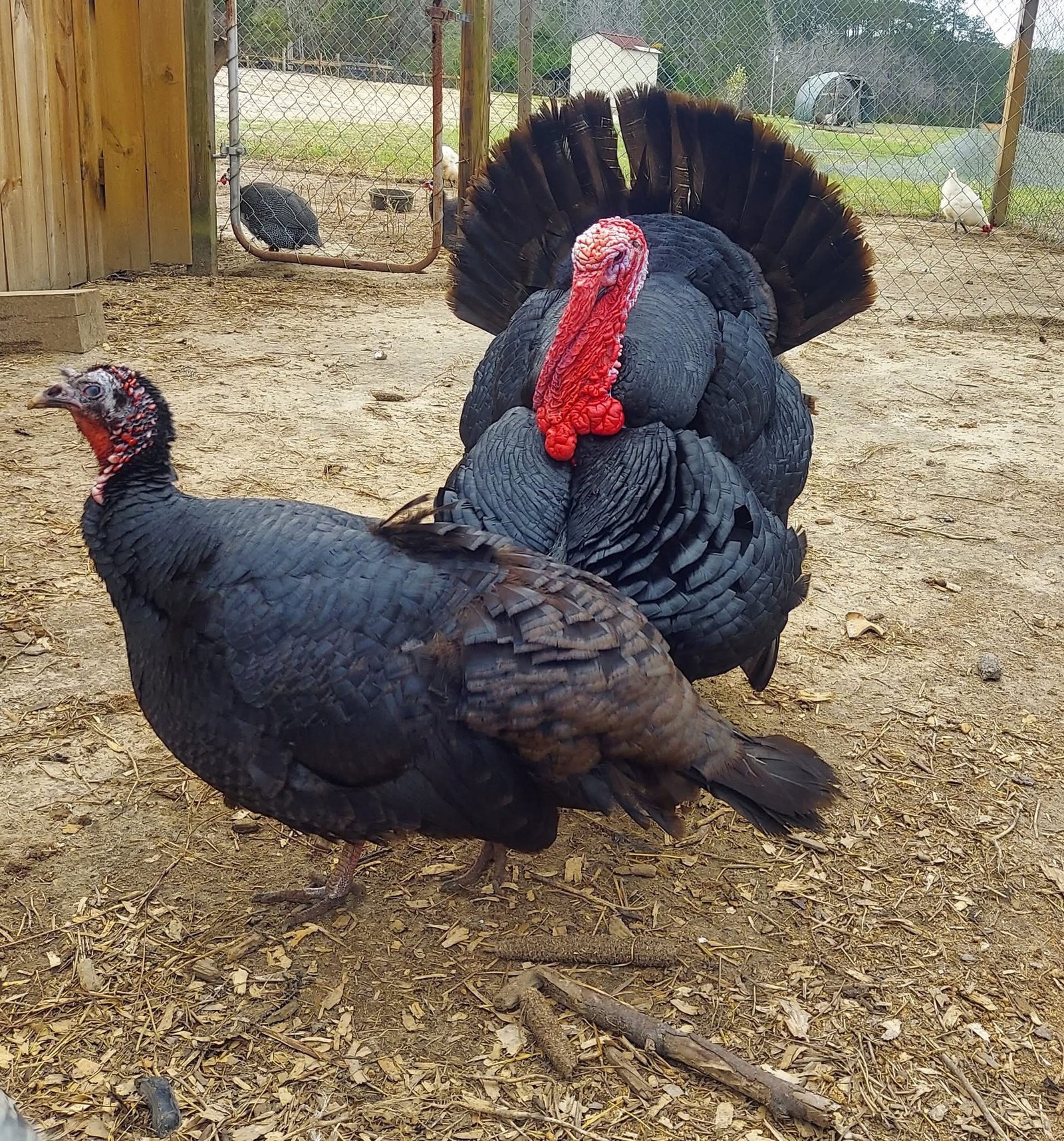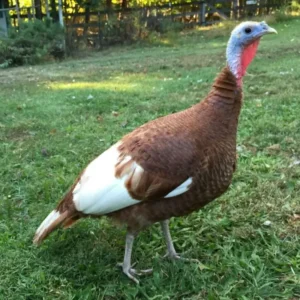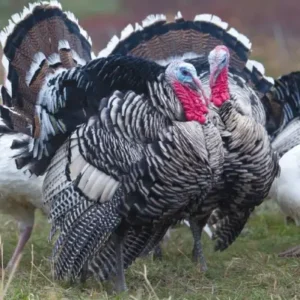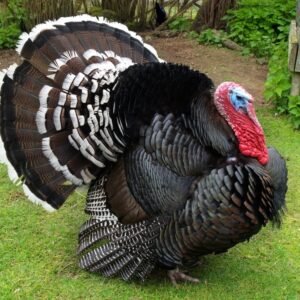$35.00
Category: Turkeys
The Black Spanish turkey, also known as the Norfolk Black, is a heritage breed with a rich history and distinctive characteristics.
Breed Overview
- Origin: Descended from Mexican turkeys brought to Europe in the 1500s by Spanish explorers. These birds were later reintroduced to the Americas by early colonists.
- Recognition: Admitted into the American Poultry Association’s Standard of Perfection in 1874.
- Status: Considered a rare heritage breed and listed as threatened by conservation organizations.
🪶 Physical Characteristics
- Plumage: Lustrous, metallic black feathers with a greenish sheen.
- Head and Neck: Red, changing to bluish-white during display.
- Beak: Black.
- Shanks and Toes: Pink in adults.
- Eye Color: Dark brown.
⚖️ Size and Weight
- Toms (Males): Approximately 23–25 pounds.
- Hens (Females): Approximately 14–15 pounds.
🥚 Reproduction and Temperament
- Egg Production: Poor; eggs are off-white with brown specks and range from large to extra-large in size.
- Fertility Rate: Approximately 60–75%.
- Broodiness: Hens are known to be good setters.
- Temperament: Generally calm, hardy, and adaptable. They are social birds that do well in free-range environments, though they can be a bit more independent than some other breeds.
🍽️ Culinary Qualities
- Meat: Renowned for its rich flavor and fine texture, making it a premium choice for traditional dishes.
🌍 Conservation and Availability
- Conservation Status: Listed as threatened; efforts are ongoing to preserve the breed through dedicated breeding programs.
- Availability: Available through select heritage breeders and hatcheries.
The Black Spanish turkey is a testament to the rich agricultural history and biodiversity of domesticated poultry. Its unique characteristics and historical significance make it a valuable breed for conservation and heritage farming.
Be the first to review “Black Spanish Turkey” Cancel reply
Related products
Turkeys
$40.00
Turkeys
$35.00
Turkeys
$45.00
Turkeys
$35.00






Reviews
There are no reviews yet.